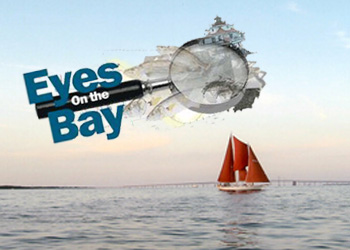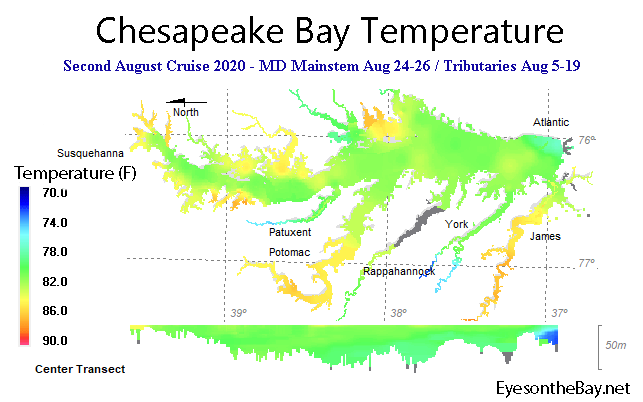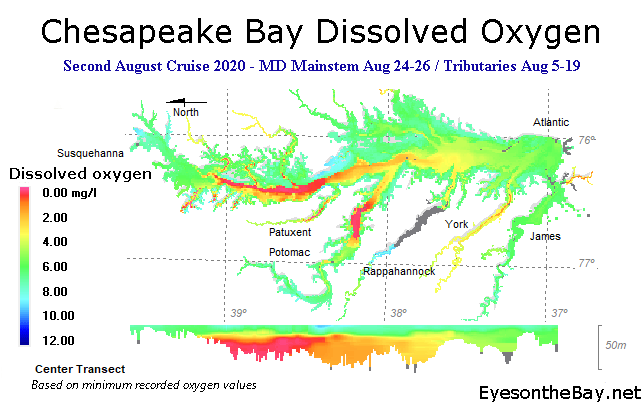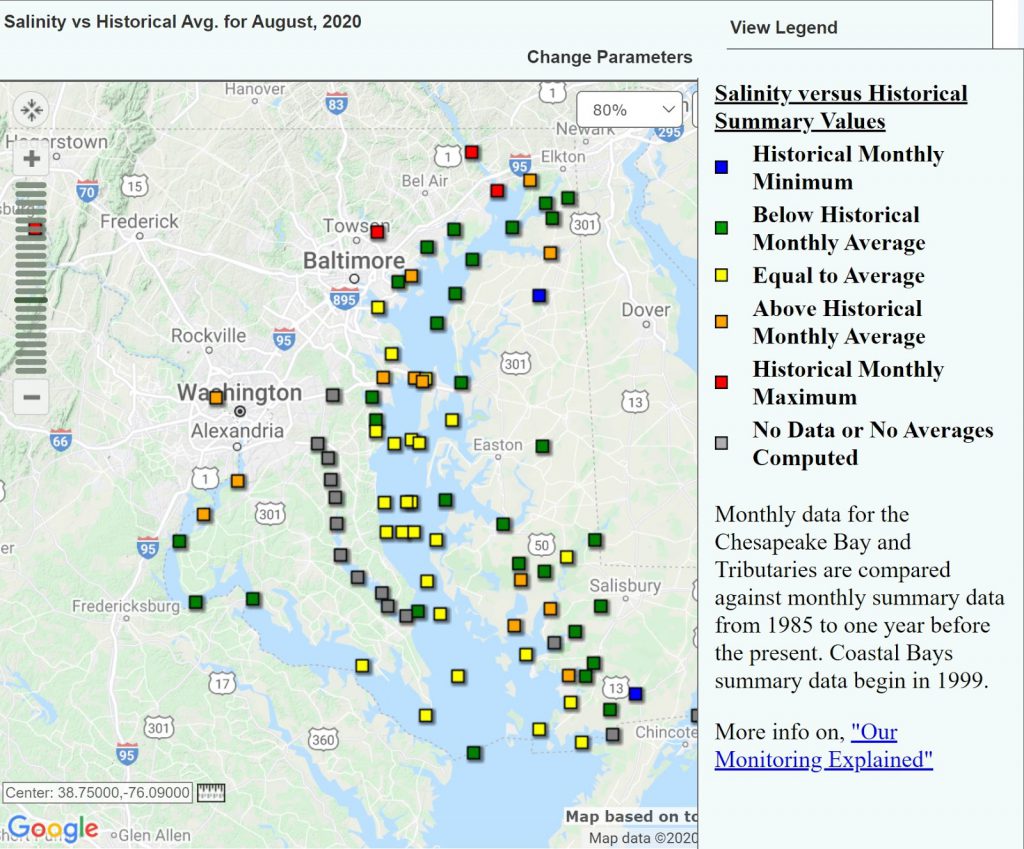Eyes on the Bay: Wrapping Up Summer 2020
 How did Tropical Storm Isaias impact the bay?
How did Tropical Storm Isaias impact the bay?
Hurricane Isaias was a destructive Category 1 hurricane that impacted the Caribbean and the United States’ east coast. How did this storm impact the Chesapeake Bay? See the dissolved oxygen section of this newsletter to find out.
In addition, be sure to check out the “Neighborhood Watch” section below to see how bay fish, crabs, oysters, and grasses responded to the late summer temperatures and patchy rain.
Climb aboard the Eyes on the Bay, toss off the dock lines, and let’s go for a virtual cruise on Maryland’s waters!
Patchy, Heavy Rains Drive Mixed Bay Response

Data source: Maryland Department of Natural Resources Eyes on the Bay. Funding for monitoring: US Environmental Protection Agency Chesapeake Bay Program and state sources.
Following the hottest July air temperatures on record that resulted in warm bay surface temperatures in Maryland, surface water temperatures cooled down to the low 80s in August. Despite the warm summer, bay water temperatures were average for June through August. However, due to the low August flows entering the bay from the Susquehanna River, the Susquehanna Flats experienced historically high water temperatures.
Throughout August, bottom waters remained slightly cooler than surface waters. This typical summer pattern provides refuge for many bay fish seeking cooler waters. However, large portions of the bay’s cooler, deeper waters are oxygen-poor, so fish are squeezed into the coolest areas that have adequate oxygen levels. View Eyes on the Bay water temperature data online.
Chesapeake Bay Salinities Are Mixed
Bay surface salinities are mixed for August, due to the patchy rains in the watershed. In areas with the most August rain such as the upper western shore and the lower Eastern Shore, salinities were below normal. This was slightly offset by low flows from the Susquehanna River during most of August. However, from the Bay Bridge south to the state line, surface salinities were normal. Typically, the lowest flows entering the bay occur during August because of increased water uptake from growing vegetation.
Oxygen Conditions Rebound as Isaias Blows Through Bay

Data source: Maryland Department of Natural Resources Eyes on the Bay. Funding for monitoring: US Environmental Protection Agency Chesapeake Bay Program and state sources.
After ending the month of July with worse than normal oxygen conditions, August broke that pattern. State water monitoring data showed that dissolved oxygen conditions in the Maryland portion of the Chesapeake Bay mainstem were better than expected in early and late August 2020, providing more areas with suitable oxygen conditions for bay organisms. Typically, warmer waters hold less oxygen, and warmer surface waters can create a barrier to oxygen mixing into deep waters of the bay. However, the strong, prolonged winds and cool rain of Tropical Storm Isaias helped mix bay waters and recharge oxygen to deeper waters. To see recent oxygen levels by depth, check the “Do not fish below this depth” map and Eyes on the Bay dissolved oxygen data.
For more detailed and up-to-date Chesapeake Bay conditions in your area, please continue to check out Eyes on the Bay, your one-stop shop for information on Maryland’s bay waters.
Neighborhood Watch
Blue crabs: In August, with water temperatures in the low 80s, blue crabs were active in shallow water and seeking mates as well as food (bay worms, shellfish, plant material, and fish). Some females began migrating south. Learn more.
Oysters: In August, deeper waters where oysters live were slightly cooler than the surface. Oysters were done spawning throughout the bay and at that time of year, disease-related mortalities usually increase sharply. Learn more.
Striped bass: Resident striped bass in late summer held in the cooler, well-oxygenated river mouths or main bay structures such as channel edges, underwater points, hard bottom, and drop-offs. Learn more.
Bay grasses: Eelgrass, a higher salinity, cooler water species found in the lower bay, was dying back with the mid-summer heat of August. Wild celery and several other species were at peak growth and starting to produce flowers and seeds. Learn more.
Key Links
New Eyes on the Bay feature – The Eyes on the Bay experts have created a new feature to help you look at changing bay conditions over time. This helps you answer questions like, “Which Bay areas are colder/saltier than normal and how does this change over the last several months?”
Click Before You Cast – Know more, catch more fish. For the full weekly fishing conditions summary and more detailed and up-to-date fishing conditions in your area of the bay, be sure to check out Eyes on the Bay’s Click Before You Cast
Chesapeake Bay Hotline – “It’s the 911 of the Chesapeake Bay!”
As always, call the Chesapeake Bay Hotline at 1-877-224-7229 to report any of the following:
Boating accident or reckless activity | Fish kill or algal bloom | Floating debris that poses a hazard to navigation | Illegal fishing activity | Public sewer leak or overflow | Oil or hazardous material spill | Critical area or wetlands violation | Suspicious or unusual activity




 1-888-373-7888
1-888-373-7888 233733
233733